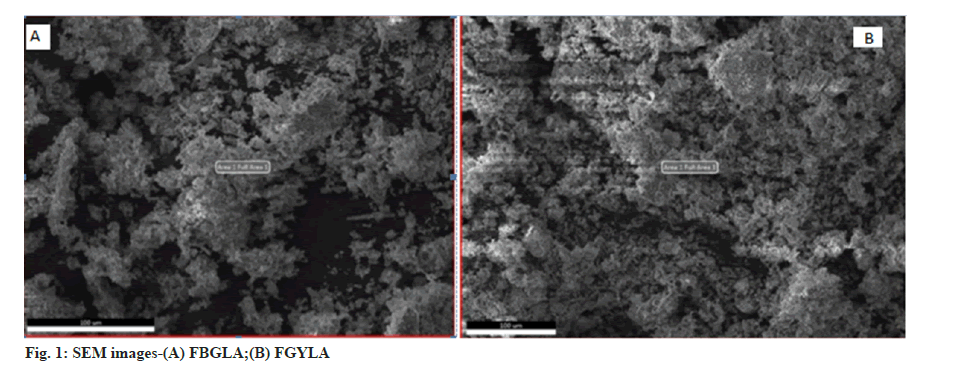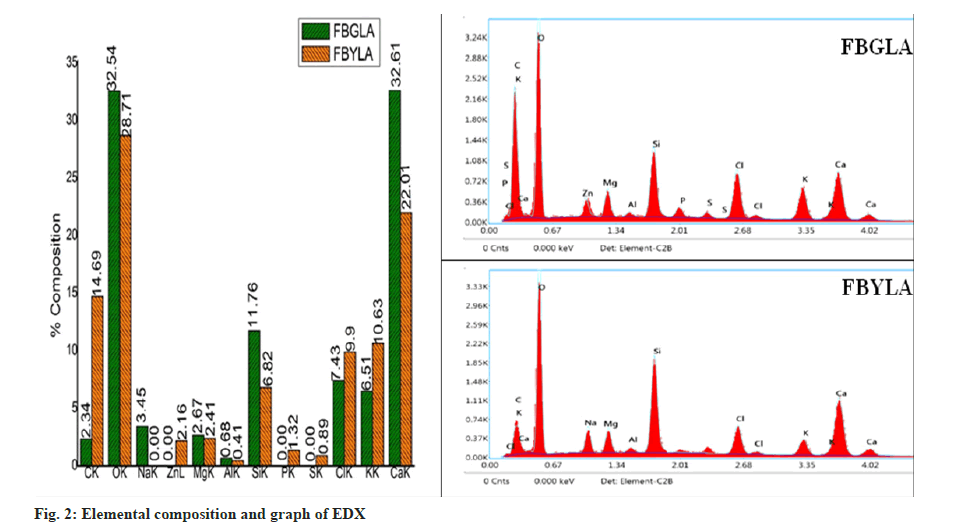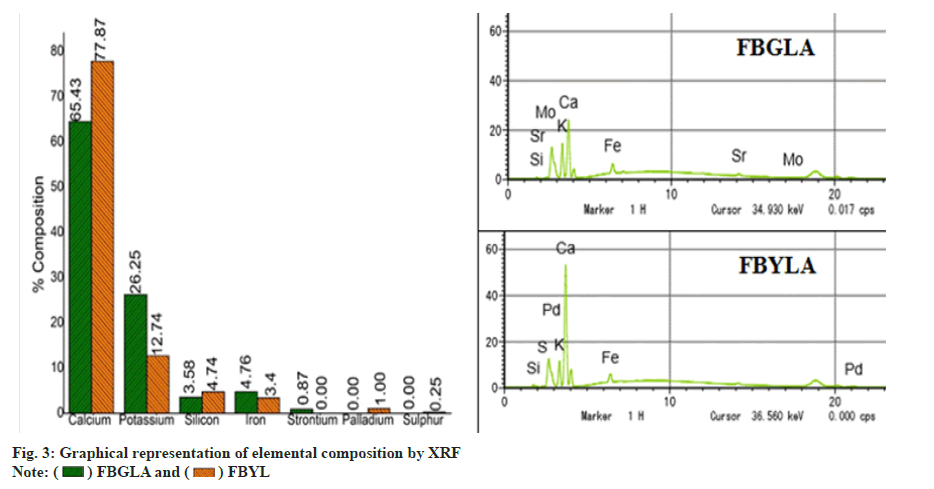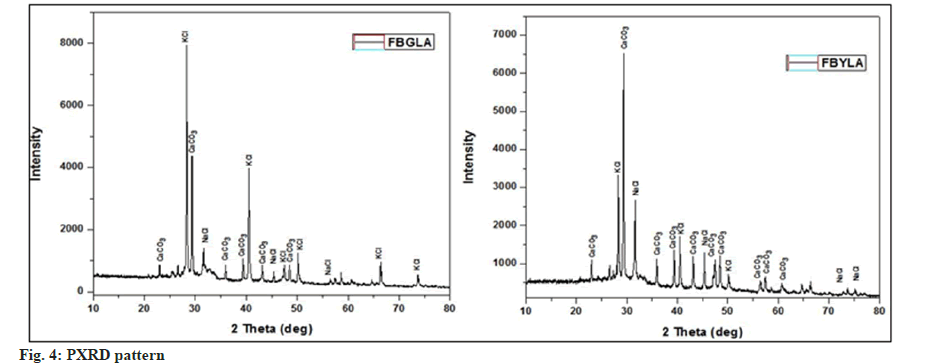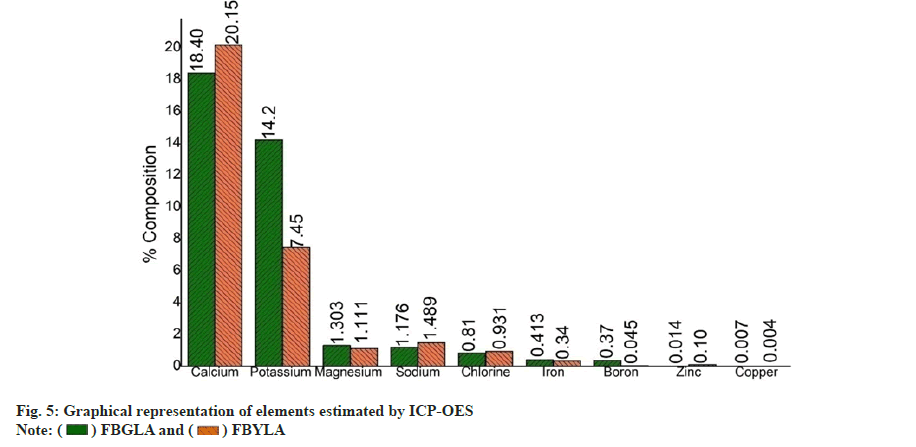- *Corresponding Author:
- Shalika Ramachandran Department of Clinical Research, Siddha Central Research Institute (Central Council for Research in Siddha, Ministry of AYUSH), Anna Hospital Campus, Arumbakkam, Chennai 600106, Tamil Nadu, India E-mail: shakilasiva@gmail.com
| Date of Received | 25 November 2021 |
| Date of Revision | 19 December 2022 |
| Date of Acceptance | 13 May 2024 |
| Indian J Pharm Sci 2024;86(3):851-859 |
This is an open access article distributed under the terms of the Creative Commons Attribution-NonCommercial-ShareAlike 3.0 License, which allows others to remix, tweak, and build upon the work non-commercially, as long as the author is credited and the new creations are licensed under the identical terms
Abstract
Ficus benghalensis is remarkable tree native to India. It is commonly known as banyan tree. It contributes to business, religious and medicinal purposes. The classical literature of Siddha system of Indian medicine depicts the use of ashes of its leaves especially yellow matured leaves to heal the various ailments like skin diseases, chronic diseases etc. The ash obtained from matured yellow leaves of Ficus benghalensis mixed with sesame oil is used in the treatment of skin disorders as per Siddha system of Indian medicine. Hence an attempt was made to analyse the ash of Ficus benghalensis in both yellow matured as well as green leaves for exploring the mineral constituents through instrumental characterization such as scanning electron microscopy energy dispersive spectrometery, X-ray fluorescence spectrometery, powder X-ray diffractometery and inductively coupled plasma-optical emission spectroscopy. In this study, the presence of various elements such as calcium and potassium as major elements, magnesium, sodium, iron, boron, zinc and copper as minor elements were detected in the ash of leaves of Ficus benghalensis. Ashes of both green and yellow leaves of Ficus benghalensis have minor variations in the contents of mineral composition.
Keywords
Ficus pubescens, Ficus banyana, Ficus contonifolia, aalamaram, elemental analysis, eczema
From the ancient times of human existence, man adopted several plants for diverse applications like food, medication, other livelihood etc. Plants participates significant part in the development of human cultures around the whole world. There are various varieties of plants and trees with enormous medicinal properties. Indian and other ancient civilization were using these plants for curing and treating various diseases and ailments. Medicinal plants are the backbone of traditional medicine because they are rich sources of therapeutic value which can be used in drug development. India is known as medicinal garden of world. It has rich diversity of plant species in wide range of ecosystems. In India, these medicinal plants are used by both tribal communities and traditional system of medicines for healing practices. The rise of knowledge to cure diseases results generation of new plant derived drugs[1]. India is one of the biggest 17 mega biodiversity countries in the world. It has 15 000-20 000 plants have medicinal values in 45 000 plant species[2]. In 1996, United Nations Educational, Scientific and Cultural Organization (UNESCO) have declared that most developing countries use medicinal plants and traditional medicines for good health maintenance. India has widely accepted traditional medicinal systems, viz., Ayurveda, Siddha, Unani, Homeopathy, Yoga and Naturopathy[3].
Ficus benghalensis (F. benghalensis) Linn is commonly known as banyan, banyan fig and Indian banyan tree. It is a huge tropical, deciduous, evergreen tree and belongs to Moraceae family. Ficus pubescens (B. Heyne ex Roth), Ficus banyana Oken, Ficus contonifolia stokes are synonyms of F. benghalensis. It is commonly known as Baragad and Bad in Hindi, Peraal in Malayalam, Aalamaram in Tamil, Marri in Telugu. F. benghalensis is fast growing, evergreen tree found in monsoon and rain forests; grow upto 3 m, with spreading branches and many aerial roots. Leaves are stalked, ovate, cordate, 3-nerved, when young, they are downy on both sides. The petiole bears a large, smooth, greasy gland at the apex and is compressed and fuzzy. The fruit occurs in auxiliary pairs, each the size of a cherry, sound and downy. It grows from low altitudes to 2000 ft (600 m). It grows propagating roots, which reach the ground and develop into woody trunks. A very large branching tree reaching a height of 20 m or more with a stout trunk and with numerous aerial roots arising from horizontally growing branches, several of which reach the soil[4,5]. It is native to Indian sub-continent and widely distributed in Southeast Asia and South China. The tree is considered as sacred as a symbol of peace and harmony. It is harvested from wild for timber, ornamental in roads and gardens and medicinal uses. It is planted for soil conservation and is suitable for paper pulp. The timber is utilized for well-curbs, furniture, etc.[6]. Plants need 17 essential macronutrients and micronutrients for plant growth and metabolism. They were carbon, hydrogen, oxygen, nitrogen, phosphorus, potassium, sulfur, calcium, magnesium, boron, chlorine, copper, iron, manganese, molybdenum, nickel and zinc[7].
All parts of FB are astringent, acrid, sweet, refrigerant, anodyne, vulnerary, depurative, antiinflammatory, ophthalmic, styptic, anti-arthritic, diaphoretic, antidiarrheal, antiemetic and tonic[8]. The aerial roots are useful in obstinate vomiting, leucorrhoea and osteomalacia of limbs. The bark is useful in burning sensation, hemoptysis, hemorrhages, diarrhea, dysentery, diabetes, enuresis, ulcers, skin diseases, gonorrhea, leucorrhoea and hyperpiesia. Leaves are good for ulcers, leprosy, allergic conditions of skin and applied hot as poultice for abscesses. The apical buds are useful in diarrhea and dysentery. The fruits and seeds are refrigerant and tonic. Latex is externally applied for pains, bruises and useful in rheumatism, lumbago, nasal inflammation, bleeding and inflammations of gums, hemorrhoids, gonorrhea, inflammations, cracks of sole and skin diseases[9].
Ash is the amorphous powder of inorganic components after the combustion of plant material. Ash is composed of many major and minor elements which plants need for growth. Most of elements are extracted from the soil and atmosphere. The ash was used mainly to produce potash for fertilizer industry. Ash consists of many inorganic minerals. Traditionally wood ash is used in fertilizers, composts, pottery, soaps, bio-leaching and food preparation. It is necessary for the maintenance of certain physicochemical processes which are essential to life. They are required for a variety of biochemical and physiological functions such as enzyme action, nerve impulse transmission and muscle contraction.
Unlike carbohydrates, fats and proteins, minerals don’t furnish energy but they influence the rate of biochemical reactions through enzymes. The minerals required in human nutrition broadly are classified into two groups as macro elements and micro elements. The macro-minerals contain calcium, phosphorus, sodium and chloride, while the micro-elements contain iron, copper, cobalt, potassium, magnesium, iodine, zinc, manganese, molybdenum, fluoride, chromium, selenium and sulphur[10]. The macro-minerals are required in amounts >100 mg/dl and the micro-minerals are required in amounts <100 mg/dl[11].
In addition to physiological functional uses of the minerals, some medicinally therapeutic usages are mentioned in Siddha system of Indian medicine. The ashes of matured yellow leaves of F. benghalensis is mentioned for the treatment of eczema[12]. The skin is the body’s largest organ which participates in sensitivity and offers protection against microorganisms, chemicals and Ultraviolet (UV) radiation. Consequently, the skin may suffer alterations such as photo-ageing, immune dysfunction and inflammation which may significantly affect human health[13]. Eczema is an umbrella term which includes several skin disorders such as dark colored patches, rough, scaly, leathery patches, swelling, crusting and oozing. It is an itchy, inflammatory skin condition with a predilection for the skin flexures[14]. In this communication, the authors attempted to characterize the mineral composition of the ash of matured yellow leaves of F. benghalensis, which is specifically mentioned to cure eczema in the Siddha system of medicine and as well as the matured green leaves.
Materials and Methods
Plant collection and preparation of ash:
Matured green leaves and yellow leaves of F. benghalensis were collected from natural habitats in Arumbakkam region of Chennai in the months of December and February 2018 respectively.
They were dried at room temperature and roughly powdered. According to traditional systems of Indian medicine, earthen pots are used for burning purposes. Hence, the coarse powder F. benghalensis Green Leaf Ash (FBGLA), F. benghalensis Yellow Leaf Ash (FBYLA) were taken in earthen pot and kept in muffle furnace maintained at 600° till ash becomes carbon free. Then they were cooled in desiccator, stored in air tight containers and labeled as FBGLA, FBYLA for further analysis and chemical characterization.
Characterization techniques:
Surface morphology and elemental composition and mapping were obtained by Field Emission Scanning Electron Microscopy (FE-SEM) attached to Energy Dispersive X-ray spectrometry (EDX). The mineral compositions were determined using X-ray Fluorescence spectrometer (XRF), Powder X-ray Diffractometer (PXRD) and Inductively Coupled Plasma Optical Emission Spectrometer (ICP-OES).
SEM:
FE-SEM (TESCAN-MIRA 3XMU, Czech Republic) was used the present study. The material was mounted directly on stubs using double-side adhesive tape and sputtered with a thin layer of gold in a fine coater. The electron micrographs were obtained at 15 kV, with an integrated digital image acquisition system.
EDX:
The elemental analyses were obtained by an Energy Dispersive Spectrometer (EDS, TESCANMIRA 3XMU, Czech Republic). The Instrumental parameters for FBGLA, fixed as voltage was 10 kV, magnitude was 386, take off was 3 s and live time was 81.9 s, amplitude time was 3.84 sand resolution was 27.4 eV, for FBYLA sample the set magnitude was 570.
XRF:
The measurements were performed XGT-2700 X-Ray analytical microscope (Horiba, Japan) with X-Ray tube and Rh-anode. The tube voltage and current were 50 kV and 1 mA, respectively. High purity silicon detector (xerophyte) capable of detecting sodium to uranium (atomic numbers 11- 92) was used. Range of Charge-Coupled Device (CCD) camera was magnification 30 and 100 approximately which can analyze varied type of samples like metal plates, powders and coatings.
Instrumentation parameters were fixed. Live time was 60 s, processing time was p3, XGT diameter is 10 μm. The X-ray tube voltage was 50 kV, current was 1.000 mA, X-ray filter and cells were nonexistence and quantification correlation was standardless.
PXRD:
Powder diffraction data was collected by Aeris panalytical diffractometer with Ni-filtered copper radiation, in Bragg-Brentano (BB) geometry with the sample prepared in thin layer on a silicon zerobackground holder. 1 g of each sample was taken and powdered in Agate mortar to very fine powder. PXRD patterns were scanned in the range 2Ɵ=10- 100º with a step size of 0.01º and 40 s per step. The panalytical high score plus software suite was used for data treatment.
ICP-OES:
In this study, the wet digestions of the samples were performed using a laboratory microwave digester with 40 closed vessels (Mars 6, CEM, United States of America (USA)). An inductively coupled plasma optical emission spectrometer (Agilent, Model 720 series, Santa Clara, California, USA) was used for the determination of elements present in the samples FBGLA and FBYLA. The gas employed was argon with 99.99 % purity. For sample preparation, the method of EPA 3050B was followed.
About 0.5 g sample was accurately weighed and taken with 10 ml con. HCl and 10 ml con. HNO3. Then the solution was kept on laboratory microwave oven. Further 10 ml of con. HCl added for complete digestion. Finally the solution filtered through Whatman no.1 filter paper. The filtrate solution was made-up to 250 ml in a standard measuring flask. The solution was taken to instrumental analysis.
Results and Discussion
SEM, images a sample by scanning it with a highenergy beam of electrons. The electrons interact with the atoms that frame the sample producing signals that contain information about the sample’s surface topography, composition. SEM is used across a number of commercial, industrial and research applications. From cutting edge production processes to forensic applications, there’s a diverse range of practical applications for the modern SEM[15].
The morphology of FBGLA and FBYLA were observed by FE-SEM and are shown in fig. 1. The images showing non-crystalline amorphous structure present in the ash were non-uniform in the nature. From FE-SEM image it is clear that both FBGLA and FBYLA were amorphous granular in nature.
The EDX technique is non-destructive and specimens of interest can be examined in situ with little or no sample preparation[16]. The technique measure qualitative, semi-quantitative, quantitative and also provide spatial distribution of elements through mapping. The EDX spectrum was recorded to determine the chemical composition of the FBGLA and FBYLA (fig. 2). The content of carbon in FBGLA is 6.3 times greater than in FBYLA, content of oxygen in FBGLA is 1.13 times lesser than in FBYLA, content of magnesium in FBGLA is 1.1 times lesser than in FBYLA, content of aluminum in FBGLA is 1.51 times lesser than in FBYLA, content of silicon in FBGLA is 1.72 times lesser than in FBYLA, content of chlorine in FBGLA is 1.33 times greater than in FBYLA, content of potassium in FBGLA is 1.63 times greater than in FBYLA, and content of calcium in FBGLA is 1.48 times lesser than in FBYLA (fig. 2).
The XRF findings revealed the presence of silicon, sulphur, potassium, calcium, iron, strontium and palladium. In this exploration, the weight percentage of calcium was found to higher in FBYLA (77.87 %) than FBGLA (64.53 %). Similarly weight percentage of silicon was higher in FBYLA (4.74 %) than FBGLA (3.58 %). The content of potassium and iron in FBGLA were 26.25 % and 4.76 % which were higher than the content of potassium (12.74 %) and iron (3.40 %) in FBYLA. The content of silicon in FBGLA is less than 1.33 times in FBYLA, content of potassium in FBGLA is greater than 2.06 times in FBYLA, content of calcium in FBGLA is less than 1.21 times in FBYLA, and content of iron in FBGLA is greater than 1.4 times in FBYLA. The XRF results conclude that both samples FBGLA and FBYLA were rich in calcium and potassium. The calcium content in FBYLA was slightly higher than FBGLA contradictorily the potassium content in FBGLA was slightly higher than FBYLA. The identified elements are presented in fig. 3.
The peaks of the FBGLA and FBYLA were matched with the standard constituents through Inorganic Crystal Structure Data (ICSD). In FBGLA, strong peaks showing high intensities at 2θ angles of 28.3090, 29.3658 and 40.4824 were recorded (fig. 4). Several intermediate and small peaks, displaying low intensities, were recorded at 2θ angles of 23.0290, 31.6408, 35.9601, 39.3986, 43.1453, 47.4681, 48.4701, 48.4701, 50.1469, 66.4042, and 73.7168. PXRD results show the presence of elements such as Ca, K, Cl, C and O in the form of calcite (CaCO3) (98-002-0179), sylvite (KCl) (98-024-0519) and halite-(NaCl) (98-024- 0599). FBGLA contains CaCO3 (50 %), KCl 45 % and halite (5 %).
In FBYLA, strong peaks screening high intensities at 2θ angles of 28.3146, 29.3589 and 31.6568 were recorded. Some intermediate and small peaks screening low intensities at 2θ angles of 23.0293, 35.9361, 39.3733, 40.4761, 43.1529, 47.4692, 48.4666, 50.1347, 56.4733, 57.3737 and 60.7018 were recorded. The major peak corresponds to CaCO3, KCl and NaCl and their percentages are 73 %, 15 % and 12 % respectively. The content of calcium in FBGLA is less than 1.46 times FBYLA, content of potassium in FBGLA is greater than 3 times in FBYLA, and content of sodium in less than FBGLA is 2.4 times FBYLA.
ICP-OES method with the advantages of low cost, rapid analysis, wide linear range, low detection limit and broadly used in simultaneous determination of multi-elements. In recent years, microwave digestion method has become more common international digestion methods, which has many advantages, such as fast dissolving, good dissolving effect, simple, safe, easy to control, low evaporation losses, multiple samples digestion and good reproducibility[17](fig. 5).
The ICP-OES results showed the presence of boron, copper, iron, calcium, magnesium, potassium, sodium, chlorine and zinc. The elements calcium, potassium, sodium and magnesium were present in major quantities than boron, copper, iron, chlorine and zinc. The content of boron in FBGLA is less than 1.22 times in FBYLA, content of copper in FBGLA is greater than 1.75 times in FBYLA, content of iron in FBGLA is greater than 1.22 times in FBYLA, content of calcium in FBGLA is less than 1.1 times in FBYLA, content of magnesium in FBGLA is greater than 1.17 times in FBYLA, content of potassium in FBGLA is greater than 1.91 times in FBYLA, content of sodium in FBGLA is less than 1.27 times in FBYLA, content of chlorine in FBGLA is less than 1.15 times in FBYLA, and content of zinc in FBGLA is less than 7.14 times in FBYLA.
FE-SEM images showed non-crystalline amorphous structures which were non-uniform in the nature. EDX results (fig. 2) showed that main elements in the test samples were carbon, oxygen, zinc, magnesium, aluminium, silicon, phosphorous, sulphur, chlorine, potassium and calcium. Here 1.32 % of phosphorous was identified in FBYLA but not in FBGLA. Phosphorus is an essential element of biological systems. It is part of the genetic material and the phosphate ester bond is universally used for energy transfer reactions in organisms. It is the second most abundant mineral in the body. It is present in each cell of the body. Most of the phosphorus is present in the bones and teeth. Phosphorus also helps the body to make Adenosine Triphosphate (ATP), a molecule the body uses to store energy, kidney function, muscle contractions, normal heartbeat and nerve signaling[18].
XRF results showed that potassium and calcium were present in higher quantities and can be called as the macro nutrients and all other elements can be recorded as micro nutrients. These micro nutrients, viz., silicon, sulphur, iron, strontium also play significant roles in the maintenance of human health.
Silicon serves as bioactive valuable element. It is highly abundant in soil and occurs in all organisms including plants and humans. Bioavailability of silicon in human diet strengthens bones and improves immune response, as well as neuronal and connective tissue health[19]. Sulphur is required for all living organisms. The most important sulfur-containing organic compounds include the amino acids (cysteine, cystine and methionine which are components of proteins), the vitamins (thiamine and biotin), the cofactors lipoic acid and coenzyme A, certain complex lipids of nerve tissues (sulfatides), components of muco polysaccharides, the sulfated polysaccharides, various low molecular-weight compounds, such as glutathione and the hormones vasopressin and oxytocin[20]. Potassium is necessary for the function of all living cells present in all plant and animal tissues. Potassium is the main intracellular ion for all types of cells, while having a major role in maintenance of fluid and electrolyte balance[21]. Calcium plays diverse activities in biology such as muscle contraction, microtubule formation, hormonal responses, exocytosis, fertilization, neurotransmitter release, blood clotting, protein stabilization, intercellular communication, mineralization, cell fusion, adhesion, and growth[22]. Iron is an essential element for approximately all living organisms ass it participates in a wide variety of metabolic processes, including oxygen transport, Deoxyribonucleic Acid (DNA) synthesis and electron transport[23]. Strontium is absorbed by the human body in the place of calcium and in case of bone growth problem due to their chemical similarity and insignificant health threat of strontium[24]. PXRD results suggest that FBGLA and FBYLA comprise mainly CaCO3 and KCl. Previously, similar study reported the presence of sylvine, silica, dolomite in Solanum surrentence fruit[25], halite, sylvine, CaCO3 and silica in Datura metel whole plant[26], CaCO3, sylvine and dolomite in Strychnos nux-vomica nuts[27].
In ICP-OES exploration, the weight percentage of calcium was found to be higher in FBYLA (20.15 %) than FBGLA (18.40 %). Similarly weight percentage of sodium was higher in FBYLA (1.489 %) than FBGLA (1.176 %). The contents of potassium in FBGLA were 14.20 % which is higher than the content in FBYLA 7.445 %. Minimal amounts of sodium, magnesium, boron, copper and iron were identified. These nutrients partake applications in biological systems. Boron is an essential element for plants, human and animal health. Boron has a wide range of physiological effects on biological systems at low concentrations, whereas it is toxic too at high concentrations. It has roles in steroidal hormone metabolism, healthy bone development and cell membrane maintenance[28]. Copper is an important mineral, human body contains 75-100 mg of copper. It present in each tissue of the body, majorly in the liver, with less amounts found in the brain, heart, kidney, and muscles[29]. Magnesium is essential element in biological systems. It plays essential role in biological activity of ATP and drug binding. It is present in chlorophyll, enzymes, nucleic acids, cell membrane walls and proteins. In human health, it helps to nerve conduction, hypertension, diabetes and glucose tolerance[30]. In humans, sodium plays a key role in the regulation of blood volume, blood pressure, osmotic balance and maintains a constant pH. Sodium ions are primarily found inside the nerve cells of human. They regulate the flow of water across the membrane. They are needed for transport of sugars and amino acids into the cells[21]. Zinc is essential for many biological functions including DNA synthesis, cell division, gene expression and the activity of many enzymes in biological systems[31].
Skin is the primary of defense for protecting our bodies against external perturbations, including UV irradiation, mechanical/chemical stress and microbial disease. Nutrition is required for the safeguarding of skin health. An impaired nutritional status, in particular, the importance of micronutrients such as zinc and iron changes the structural integrity and biological function of skin. Skin health measured in cell culture, animal and clinical studies. These micronutrients are working as active compounds in therapeutic agents or treating certain skin diseases and as ingredients in cosmetic products. Vitamins and minerals from all the forms viz., food, supplement, skin cream, play an integral role in a healthy complexion. The minerals such as zinc, magnesium, iron, calcium promote healing of skin diseases[32]. Zinc is an essential cofactor of numerous metalloenzymes. Main function of zinc is to protect the skin against photo damage by absorbing UV radiation and limiting penetration of radiation into skin[33]. Patients with atopic dermatitis also show a significant decreased level in zinc[34]. Like vitamins E, C and zinc, peptide copper acts as an antioxidant, protects skin from the damage due to UV radiation[35]. Copper stimulates the maturation of collagen[36]. Selenium protects the skin from UV radiation induced oxidative stress[37]. Selenium used in treatment of psoriasis which shows decreased glutathione peroxides levels[38].
By comparing the data obtained from XRF, ICPOES, XRD and EDX, it is found that the content of carbon, phosphorus, sulfur, potassium, iron, copper and strontium in FBGLA>FBYLA, The content of oxygen, zinc, sodium, aluminum, silicon, calcium, boron, and palladium in FBGLA<FBYLA, the content of magnesium in FBGLA>FBYLA according to ICP-OES, the content of magnesium in FBGLA was found to be lesser as measured by EDX. The content of chlorine in FBGLA<FBYLA according to ICP-OES, but it was found to be greater as measured by EDX.
The minerals and nutrients play vital role in skin care treatment in ancient and modern decades. Here scientific characteristic studies of non-destructive electron and X-ray methods delivers the presence of various elements in the ash of both green and yellow leaves F. benghalensis. FBYLA CaCO3 (73 %), KCl 15 % and halite (12 %). FBGLA contains CaCO3 (50 %), KCl 45 % and halite (5 %). The variations in the content of CaCO3 and KCl are notable. Efficacy studies on the treatment of eczema is essential in both yellow matured leaves and green leaves to scientifically validate the traditional claim.
Acknowledgments:
Authors are thankful to The Director General, Central Council for Research in Siddha, The Assistant Director I/c, Siddha Central Research Institute for encouragement and support.
Funding:
Funded by Central Council for Research in Siddha under Intra Mural Research Scheme vide sanction no. 457/2016-17 dated 17.01.2017.
Conflicts of Interest
The authors declare no conflict of interest.
References
- Kumar N, Wani ZA, Dhyani S. Ethnobotanical study of the plants used by the local people of Gulmarg and its allied areas, Jammu and Kashmir, India. Int J Curr Res Biosci Plant Biol 2015;2(9):16-23.
- Sharma A, Kumar SV, Sharma PS, Chandel S. Studies on traditional knowledge of ethnomedicinal plants in Jawalamukhi, Himachal Pradesh, India. Int Res J Biol Sci 2014; 3(10):6-12.
- UNESCO C. Health orientation Texts world decade for cultural development 1988-1997. Document CLT/DEC/PRO-1996, Paris, France: UNESCO Digital Library; 1996. p. 128.
- Sivarajan VV, Balachandran I. Ayurvedic drugs and their plant sources. Oxford and IBH publishing; 1994.
- Kirtikar KR, Basu BD. Indian Medicinal Plants. International Book Distributors, book seller and publisher. 2005.
- Vikas VP, Vijay RP. Ficus benghalensis Linn. an Overview. Int J Pharm Biol Sci 2010;1(2):1-11.
- Mahler RL. Nutrients plants require for growth. Iniversity of Idaho. College of Agricultural and Life Science. CIS. 2004; p. 1124.
- Sala AV. Indian medicinal plants: A compendium of 500 species. Madras: Orient Longman Ltd., 1997; p. 20-6.
- Varanasi S, Narayana A. Medico-historical review of Nyagrodha (Ficus bengalensis Linn.). Bull Indian Inst Hist Med Hyderabad 2007;37(2):167-78.
[Google Scholar] [PubMed]
- Soetan KO, Olaiya CO, Oyewole OE. The importance of mineral elements for humans, domestic animals and plants: A review. Afr J Food Sci 2010;4(5):200-22.
- Murray RK, Granner DK, Mayes PA, Rodwell VW. Harper’s biochemistry. Appleton and lange, health profession division, USA, 2000.
- Murugesa MKS. Gunapadam 1st part mooligai vaguppu: Department of Indian Medicine and Homeopathy, 2nd edition; Tamil Nadu Government, 2008.
- Pérez-Sánchez A, Barrajón-Catalán E, Herranz-López M, Micol V. Nutraceuticals for skin care: A comprehensive review of human clinical studies. Nutrients 2018 Mar;10(4):403.
[Crossref] [Google Scholar] [PubMed]
- Butler N. National guidelines at a glance: Atopic eczema. S Afr Pharm J 2009;76(5):32-7.
- Aparna S, Aruna S. Pharmacognostic and phytochemical studies for the establishment of quality parameters of leaf of Achyranthes aspera Linn.
- Kutchko BG, Kim AG. Fly ash characterization by SEM-EDS. Fuel 2006;85(17-18):2537-44.
- Górecka H, Chojnacka K, Górecki H. The application of ICP-MS and ICP-OES in determination of micronutrients in wood ashes used as soil conditioners. Talanta 2006;70(5):950-6.
[Crossref] [Google Scholar] [PubMed]
- Tiessen H. Phosphorus in the global environment. In the ecophysiology of plant-phosphorus interactions. Dordrecht: Springer Netherlands. 2008;(7)1-7.
- Farooq MA, Dietz KJ. Silicon as versatile player in plant and human biology: Overlooked and poorly understood. Front Plant Sci 2015;6:165767.
[Crossref] [Google Scholar] [PubMed]
- Tavella C, Lova P, Marsotto M, Luciano G, Patrini M, Stagnaro P, et al. High refractive index inverse vulcanized polymers for organic photonic crystals. Crystals 2020;10(3):154.
- Pohl HR, Wheeler JS, Murray HE. Sodium and potassium in health and disease. Met Ions Life Sci 2013:29-47.
[Crossref] [Google Scholar] [PubMed]
- Kretsinger RH, Nelson DJ. Calcium in biological systems. Coord Chem Rev 1976;18(1):29-124.
- Abbaspour N, Hurrell R, Kelishadi R. Review on iron and its importance for human health. J Res Med Sci 2014;19(2):164. [Crossref]
[Google Scholar] [PubMed]
- Nielsen SP. The biological role of strontium. Bone 2004;35(3):583-8.
[Crossref] [Google Scholar] [PubMed]
- Mandal AK, Saravanan M, Subashini S, Thatipelli S, Allu R, Shakila R. Characterization of Solanum surattense Burm. f fruit through chromatographic, chemical and analytical methods. J Young Pharmacists 2021;13(4):370.
- Ramachandran S, Meenatchisundaram S, Subramanian S, Thatipelli S, Mandal AK, Allu R. Development of chromatographic fingerprint profile and multi-elemental analysis of Datura metel L. Pharmacogn Res 2022;14(2).
- Ramachandran S, Meenatchisundaram S, Allu R, Thatipelli S, Mandal AK. Proximate analysis, HPTLC finger print analysis and multi spectrometric analysis of Strychnos nux-vomica nuts. J Complement Integr Med 2022;19(2):233-42. [Crossref]
[Google Scholar] [PubMed]
- Uluisik I, Karakaya HC, Koc A. The importance of boron in biological systems. J Trace Elem Med Biol 2018;45:156-62.
[Crossref] [Google Scholar] [PubMed]
- Osredkar J, Sustar N. Copper and zinc, biological role and significance of copper/zinc imbalance. J Clinic Toxicol 2011;3(2161):0495.
- Pleshchitser AL. Biological role of magnesium. Clin Chem 1958;4(6):429-51.
[Crossref] [Google Scholar] [PubMed]
- Prasad AS. Discovery of human zinc deficiency and studies in an experimental human model. Am J Clin Nutr 1991;53(2):403-12.
[Crossref] [Google Scholar] [PubMed]
- Park K. Role of micronutrients in skin health and function. Biomol Ther 2015;23(3):207.
[Crossref] [Google Scholar] [PubMed]
- Mitchnick MA, Fairhurst D, Pinnell SR. Microfine zinc oxide (Z-cote) as a photostable UVA/UVB sunblock agent. J Am Acad Dermatol 1999;40(1):85-90.
[Crossref] [Google Scholar] [PubMed]
- Ewing CI, Gibbs AC, Ashcroft C, David TJ. Failure of oral zinc supplementation in atopic eczema. Eur J Clin Nutr 1991;45(10):507-10.
[Google Scholar] [PubMed]
- Pickart L, Vasquez-Soltero JM, Margolina A. The human tripeptide GHK-Cu in prevention of oxidative stress and degenerative conditions of aging: Implications for cognitive health. Oxid Med Cell Longev 2012;12(3)145-56.
[Crossref] [Google Scholar] [PubMed]
- Pickart L. The human tri-peptide GHK and tissue remodeling. J Biomater Sci Polym Ed 2008;19(8):969-88.
[Crossref] [Google Scholar] [PubMed]
- Balagopalakrishna C, Bhunia AK, Rifkind JM, Chatterjee S. Minimally modified low density lipoproteins induce aortic smooth muscle cell proliferation via the activation of mitogen activated protein kinase. Mol Cell Biochem 1997;170:85-9.
[Crossref] [Google Scholar] [PubMed]
- Juhlin L, Edqvist LE, Ekman LG, Ljunghall K, Olsson M. Blood glutathione-peroxidase levels in skin diseases: Effect of selenium and vitamin E treatment. Acta Derm Venereol 1982;62(3):211-4.
[Google Scholar] [PubMed]
